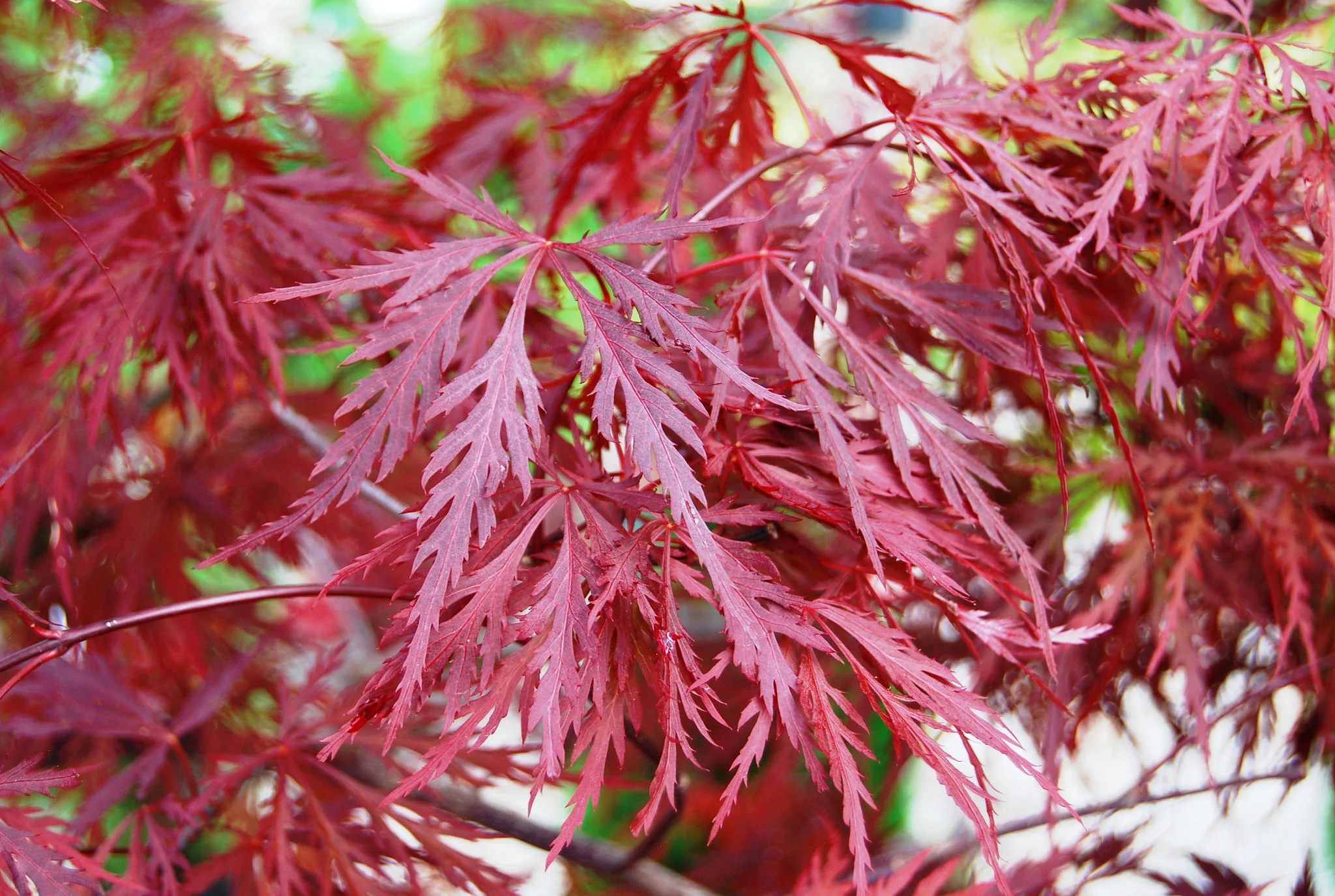Best. Trees. Ever.
By Paul James
I don’t just love Japanese maples. I adore them. Have for decades. To me, they’re the most beautiful of all trees. Interestingly, although they appear delicate, they’re actually tough as nails, and rarely suffer from pest or disease problems. I don’t think I’m going out on a limb when I say every landscape should have at least one of them.
Japanese maples grow extremely well in this area, assuming they’re planted in the right location. That generally means a spot that gets just a few hours of morning sun followed by shade the rest of the day, or dappled light throughout the day. That can be a challenge for many homeowners, so your decision as to which one to buy may come down to this: red-leaf varieties will color up best when they get morning sun, whereas green-leaf varieties will do fine in all-day shade. If all you’ve got is all-day sun, plant something else. Sorry.
Ideally, the soil should hold moisture but drain well, but I’ve grown Japanese maples successfully in fairly heavy soils as well by planting them such that at least a third of the rootball is above grade. They thrive in acidic soils, witnessed by the fact that they’re often combined with azaleas, but they’re happy in soils with a near neutral pH.
Try to plant them in an area that’s protected from hot summer winds to avoid leaf scorch. And during the first two years after planting, keep them well watered. Once established, Japanese maples are fairly drought tolerant, but it’s best to give them a deep soaking once a week, especially during the summer months.
Japanese maples make stunning specimens in the landscape, and the choices available – in terms of size, shape, and leaf color — are staggering. There are upright and weeping forms. There are varieties that can reach 25-feet tall or more and others that top out at only three or four feet. In addition to red and green leaves, there are those with yellow to orange leaves (which may turn green in summer). And the fall color of nearly all Japanese maples borders on the spectacular.
One more thing to keep in mind: You can also grow Japanese maples in containers. And because they actually prefer to be somewhat pot bound, you don’t need an especially large pot. I’ve been growing three different varieties in 18-inch pots for over eight years now, and they look great.
And finally, just in case I haven’t convinced you in words to plant a Japanese maple at your place, perhaps these pictures will change your mind.

8 responses to “Best. Trees. Ever.”
Back to Blog

My best location available is morning shade up until about 1pm, then it’s sun the rest of the day. Is there a variety such as fireglow or coral bark (my favorites) that would do well in that scenario? Thank you.
Collin
Collin, sorry but neither of those will do well in that spot. Try a weeping Japanese snowbell. It’s a great tree.
I would have to agree with you that Japanese maples are the most beautiful of all the trees. We have one on the north side of our house with a bed of hostas, ferns, and coral bells, along with a bird bath. We enjoy sitting in our living room looking out three large windows onto this area. It is so pretty and peaceful!
Thanks, Shonda. Your garden sounds lovely.
I live in north central Oklahoma. For the life of me, I cannot get a Japanese Maple to grow. I was in the Tulsa area today and was amazed at the number of beautiful Japanese Maples and azaleas in full bloom. Nothing like that here in Cashion!
Sorry for the delayed response. We had a glitch in our website. The winds in your area may be the problem. Give them all the shade you can, well drained soil, and protection from the wind.
I have had mine in large containers for about 5 years. Should I repot them or just continue enjoying them where they are?
I’d just leave them in the containers, Billye.